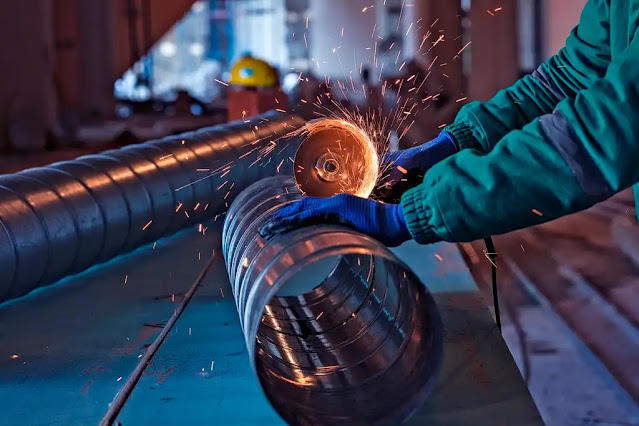What is Rebar Fabrication and Its Uses
Do you work in the construction industry? Rebar construction? Do you know the process of making reinforcement bars? If so, then you may have heard the word rebar fabrication.
The primary purpose of using rebar rods in construction is to strengthen concrete in highways, bridges, runways, or other building projects. Rebar rods are also used in fireproofing steel objects.

What is Rebar Fabrication?
Reinforcement bars of rebar are steel bars or metal mesh used as a tension device in constructing reinforced concrete.
It is rolled into a shape to reinforce the concrete inside the formwork and placed before the concrete is poured.
When the causing force is removed, it maintains its initial form and structure.
To manufacture it, steel is heated to high temperatures where metal undergoes physical changes and becomes malleable. It is then cooled down with water to have the right degree of hardness. Rebar types? The bars are also bent and used in different types of structures.
First galvanized or black, plain ends are manufactured by forcing the round bar through a die and then annealed in a furnace.
The galvanizing protects it from rusting, while blackening gives it a more aesthetic look.
Uses of Rebar Fabrication
Here are the different uses of rebar fabrication:
Vertical Posts and Columns:
One of the common uses is vertical posts and columns. For example, it can be used to support balconies or staircases.
To achieve this, forms are built to hold the concrete in place while it sets. Another use for rebar fabrication is handrails; they can strengthen the handrails to protect against falling.
Walls and Frameworks:
Reinforced concrete walls are built by pouring the concrete around vertical posts, bars, or wire mesh to form a robust framework that can support the weight. It prevents the wall from falling apart due to the weight of the upper floors.
Elevated and Slab Roads:
Rebar reinforcement is also added to concrete highways, elevated roads, and bridges to make them stable against cracks from concrete expansion due to extreme weather conditions such as rain, snow, or heat.
Piles and Jackings:
With the help of steel piles, soils are tested for their strength and ability to bear weight before construction begins. If not strong enough, thicker piles are used with the bar running through them vertically. It helps get rid of water pockets under the structure due to the drainage system.
Floating Piers and Docks:
As a tension device, rebar is used in floating piers and docks to support the concrete. It is also used for creating additional stability when water levels are high or when an entire pier section needs reinforcement.
These steel bars act as beams to support concrete slabs or decks.
Rail Tracks:
To ensure that tracks are not deformed or damaged by the weight of passing trains, rebar is effectively used to reinforce concrete in rail tracks. It can also hold the track in place during extreme weather conditions.
Final Words
While manufactured steel has suitable properties, it may still rust over time.
For structures outdoors or in water for more extended periods, rebar fabrication should be galvanized before using it. The material will resist corrosion better if the bars are hot-dipped after fabrication and before being installed in concrete structures.

No comments